One Day in Galveston, Texas
On Sunday morning, J. and I left Austin for Galveston Island. Our route along I10, then I45, took us right through the heart of Houston. On the massive highway, I felt like I was in Los Angeles again. The light was harsh, the scenery scorched, dusty, and dreary. Outside of town, we considered taking a detour to NASA so I could punch Charles Frank Bolden, Jr. in the nuts, but we figured Houston would have a problem with that.
Around noon, we crossed the causeway over West Bay and onto the northeast side of the island. It was time to roll the windows down and blast the heat. We were at the beach, but the air was cold. Before nightfall, we crisscrossed the island and saw as much as possible. I had visited the island a few times with my family when I was younger, and I had hoped that I would remember certain sights. But most of my childhood memories were of sand, surf, and trying not to step on beached jellyfish. The only tourist piers that I might have remembered had been rebuilt.
Galveston is a weird mix of the historic and new, the ugly and beautiful. It’s surprisingly big: 208 square miles, with a population in tens of thousands. Most of the homes are built on risers. The city is a treasure trove of historic buildings including the Strand National Historic Landmark District which is composed of ornate and beautiful homes from the Victorian Era. Unfortunately, we didn’t spend much time exploring the old homes.
Most of the damage from Hurricane Ike was repaired, but there was evidence of its effects everywhere. Lots of windows were still boarded up. Plenty of stores were out of business or for sale. Galveston was paradise for my aesthetic tastes. It’s beautiful and oceanside with a touch of ugly and home to quaint and rusty industrial areas.
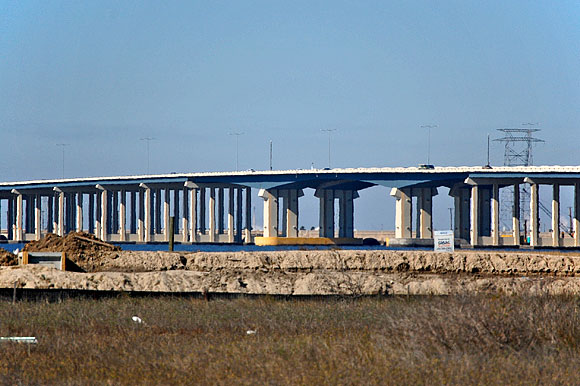
Bridge over troubled waters.
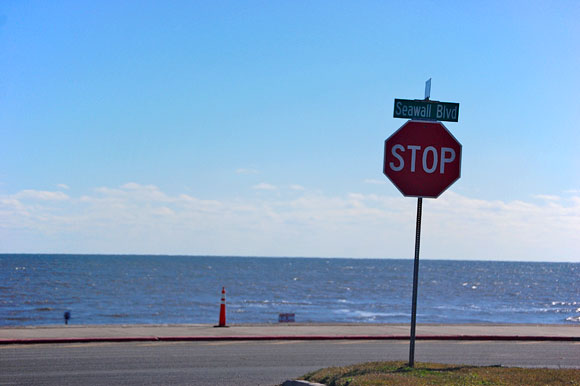
Stop, else you drive into the gulf.
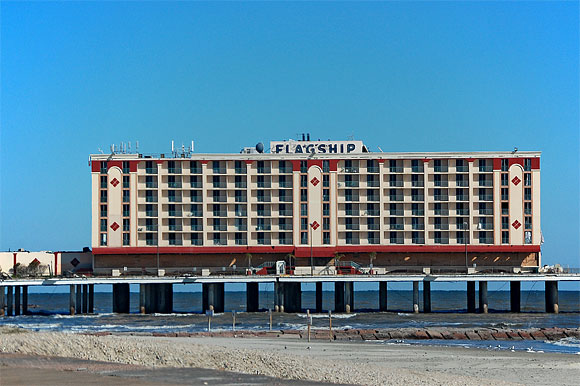
The remains of the Flagship Hotel, a pier built hotel thrashed by the 2008 hurricane.
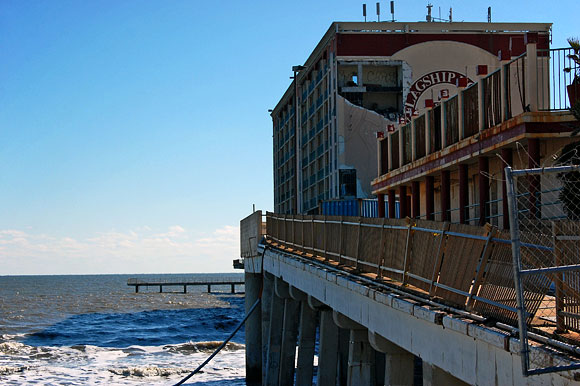
Another view. This one shows a missing wall.
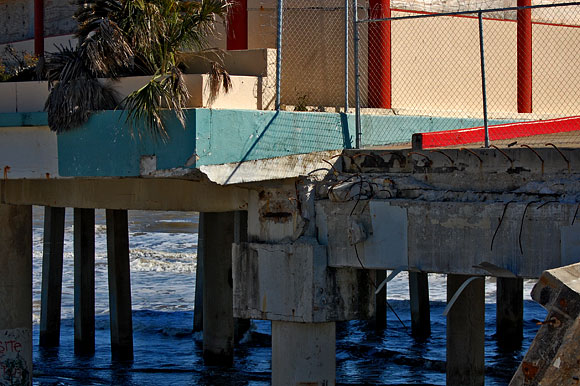
The ramps from the coastal road to the hotel had collapsed.
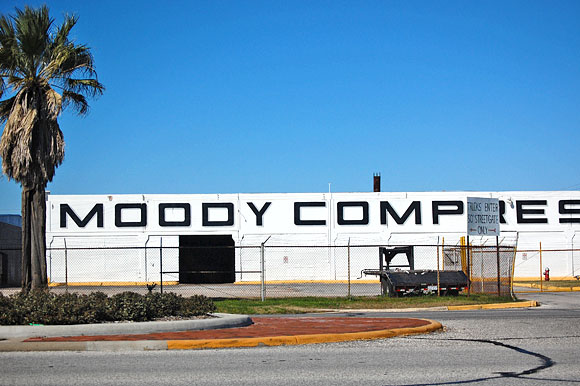
The low white Moody Compress warehouse.
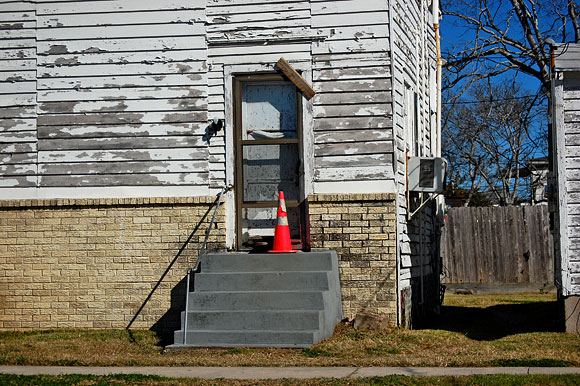
A damaged side door marked by a cone.
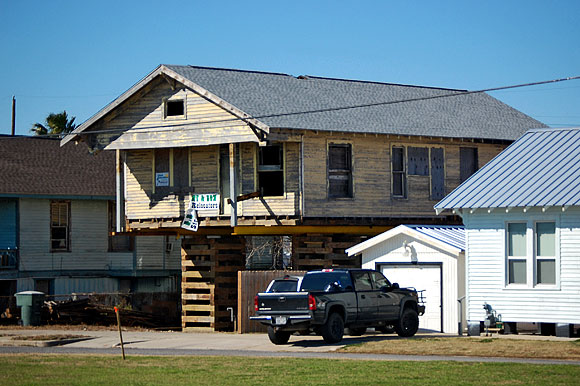
A damaged house on risers, getting ready to be relocated. Perhaps, it will be relocated to a place free of hurricanes.
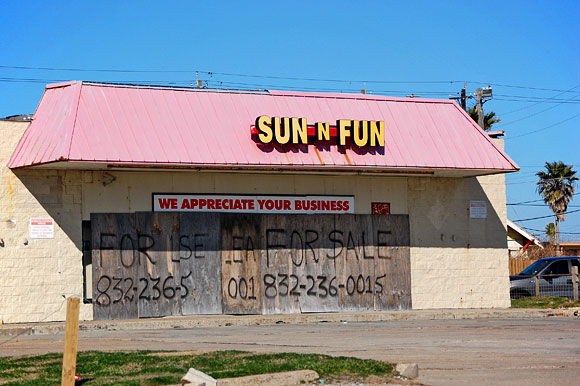
Sun’N’Fun has had better days.
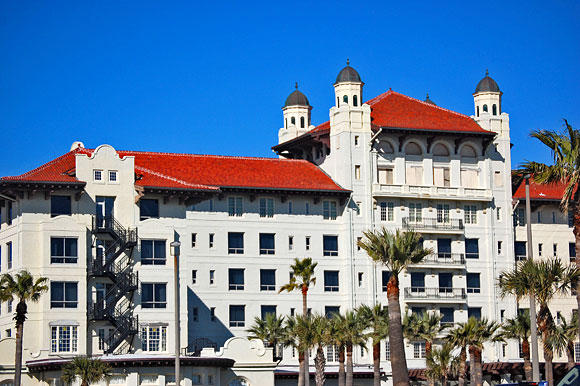
Historic Hotel Galvez.
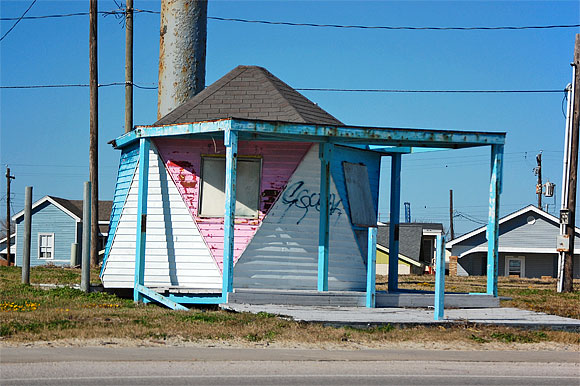
An abandoned snow cone stand?
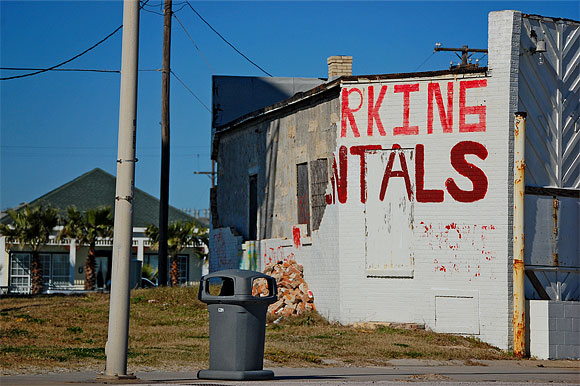
Missing bricks on a wall.
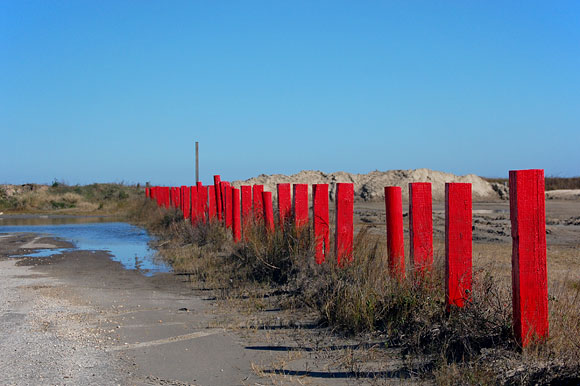
The red poles along a sandy road to beach parking.
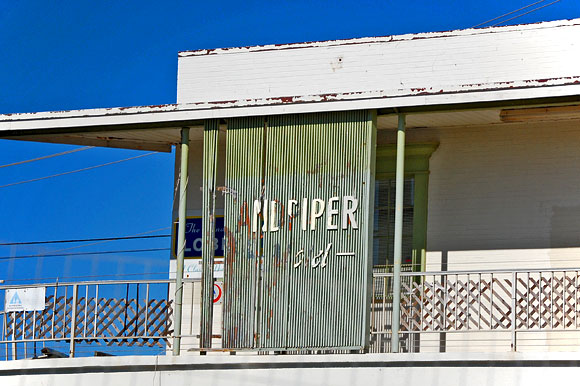
The trashed Sandpiper Hotel.
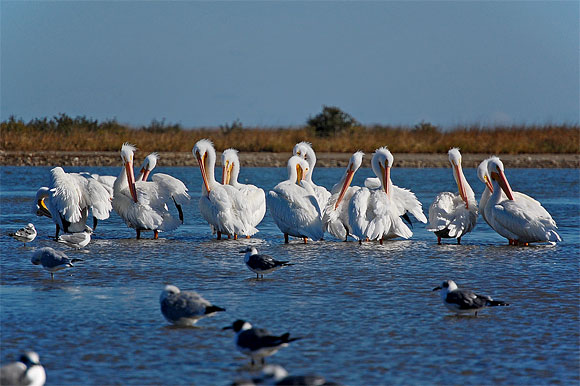
A flock of healthy pelicans sitting in a tide pool grooming their feathers.
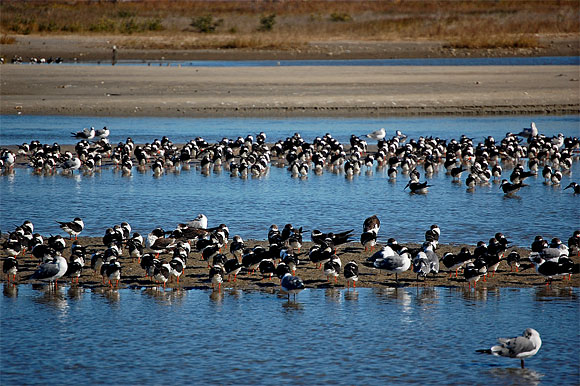
What the flock?!
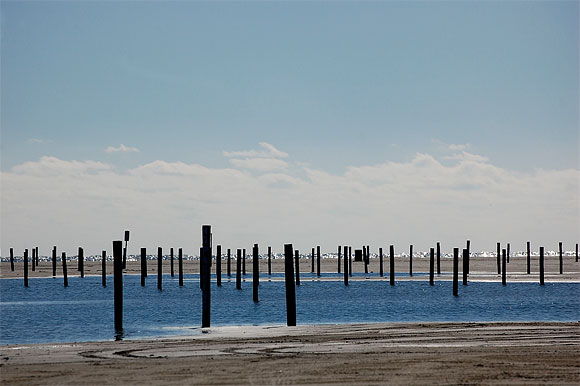
A sea of poles demarcate parking spots on the beach.
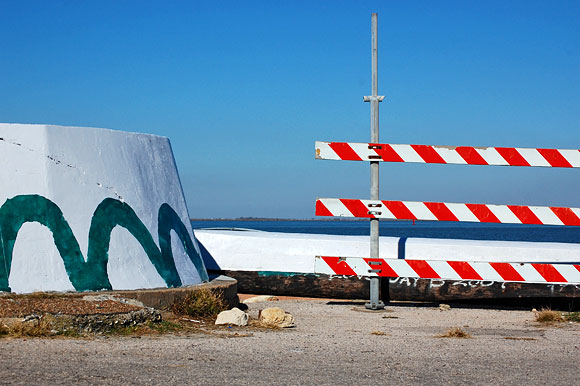
The end of the road.
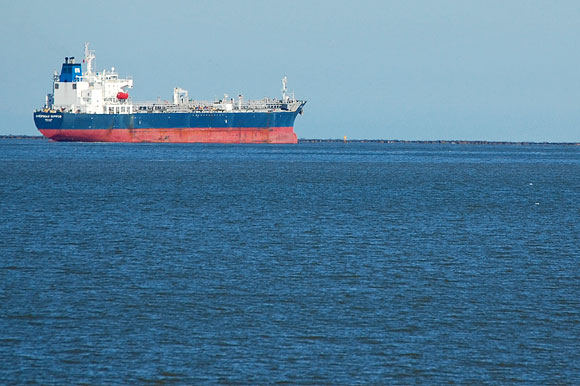
Olive oil tanker coming from Italy.
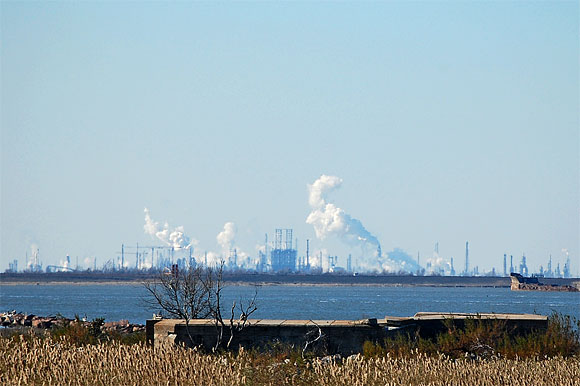
Across the bay, a row of oil refineries are smoking.
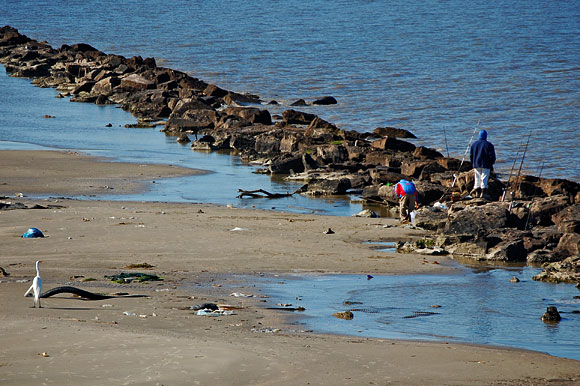
A heron eyes two fishermen.
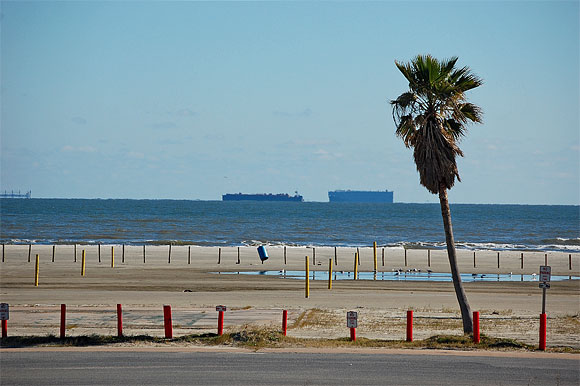
A leaning palm.
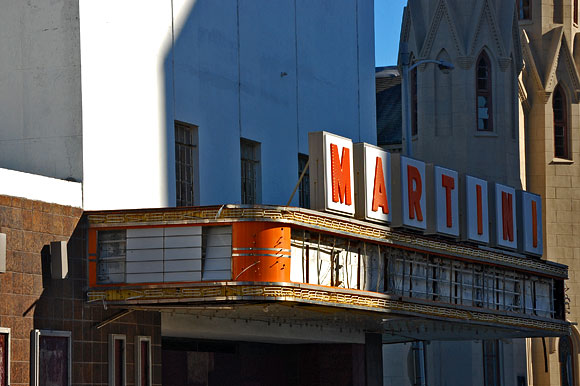
The battered Martini Theater.
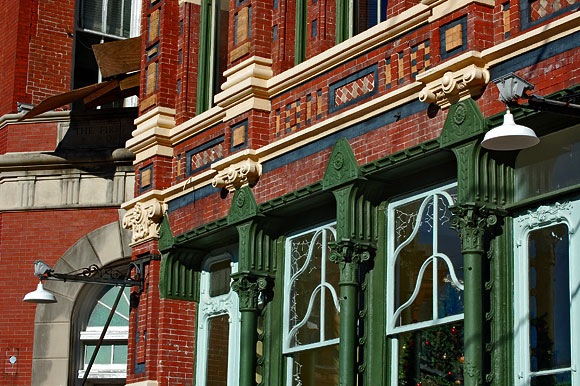
A historic building in downtown.
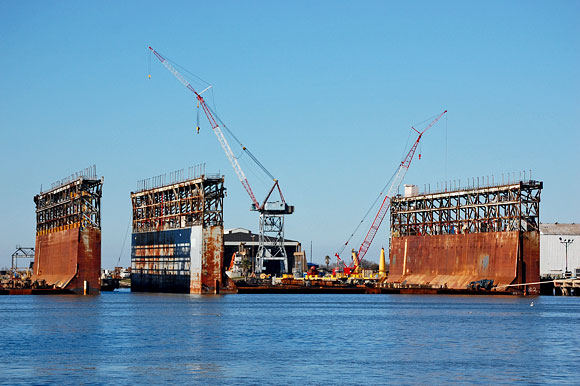
Floating dry docks.
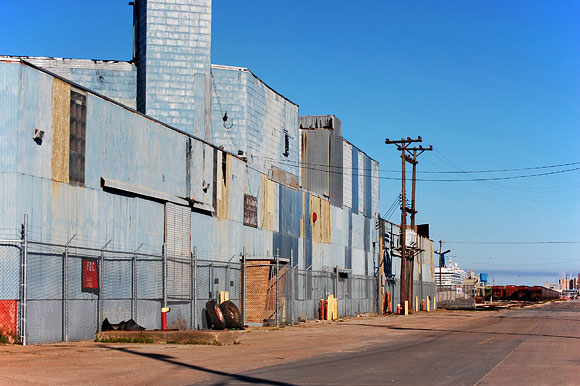
Old corrugated warehouse near the cruise ship docks.
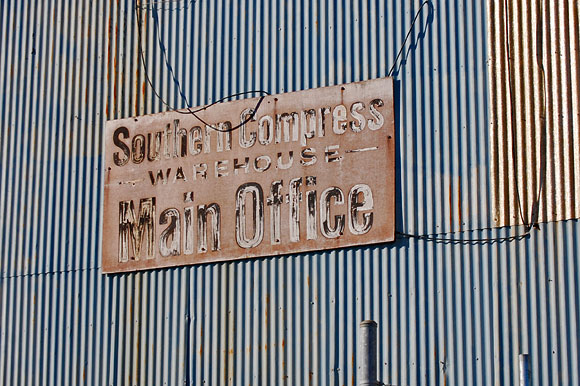
A faded sign.
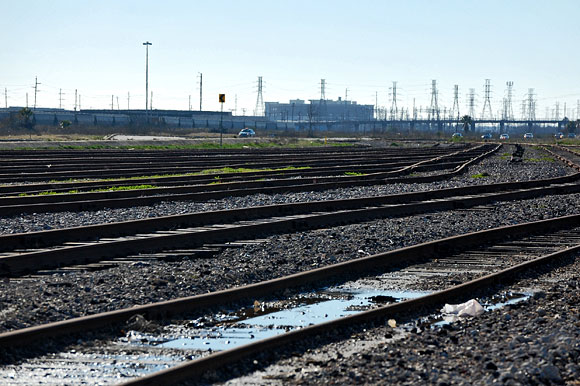
Tracks.
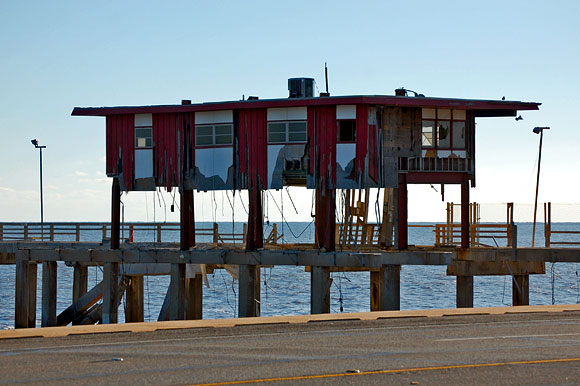
This building has seen better days.
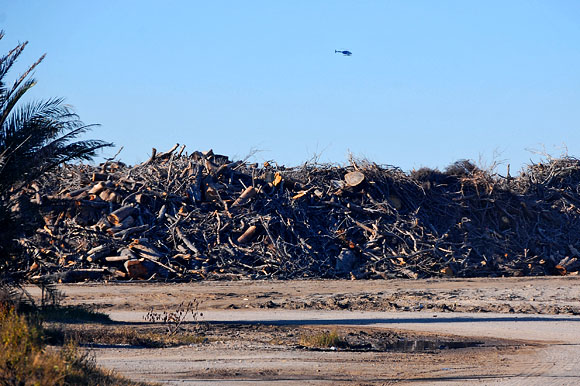
A makeshift dump houses debris.
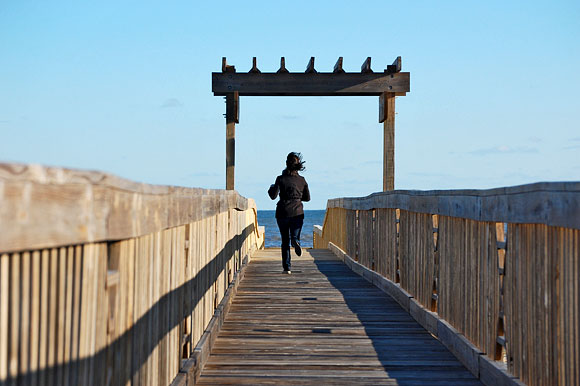
J. running on a boardwalk towards the ocean.
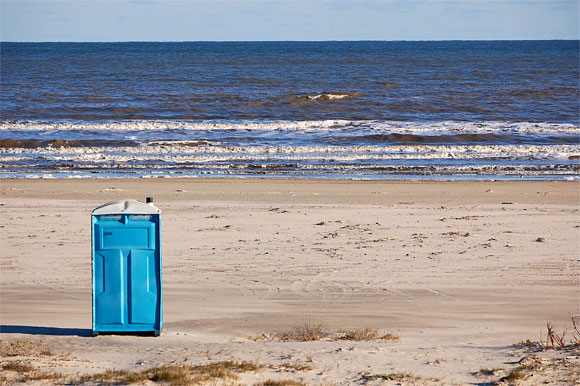
Portable toilet is dwarfed by the largest toilet of all.
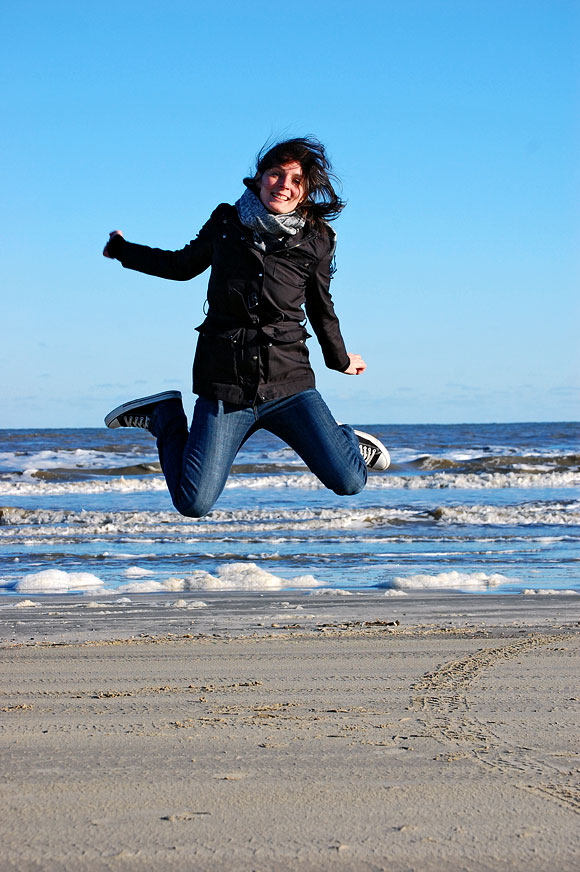
J. jumps.
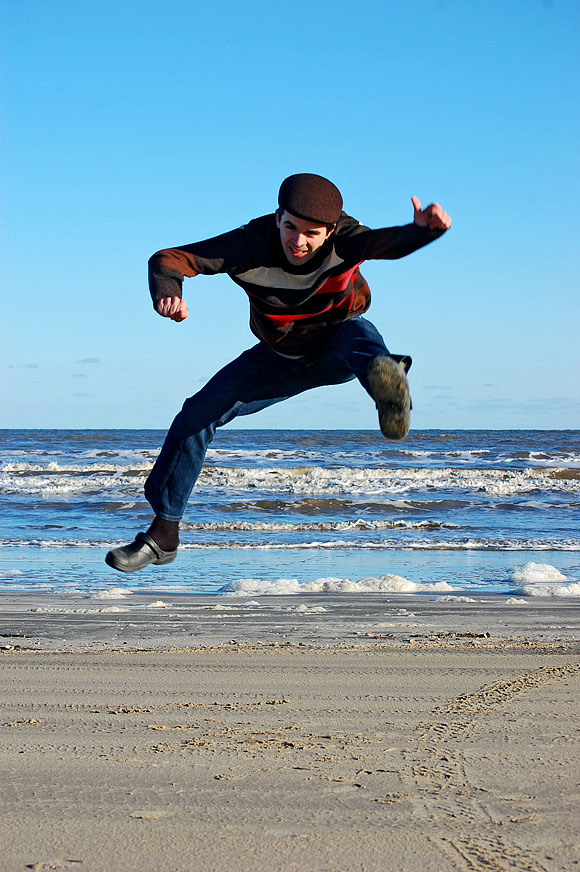
I jump.
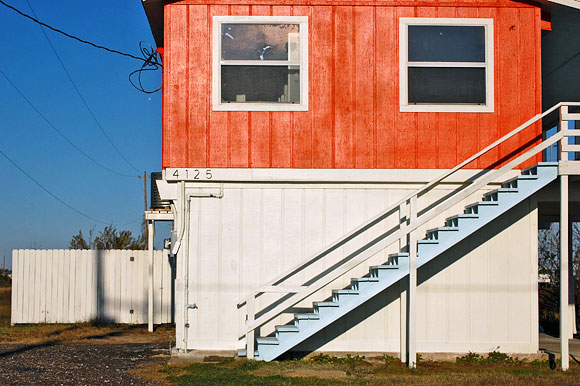
Beach house.
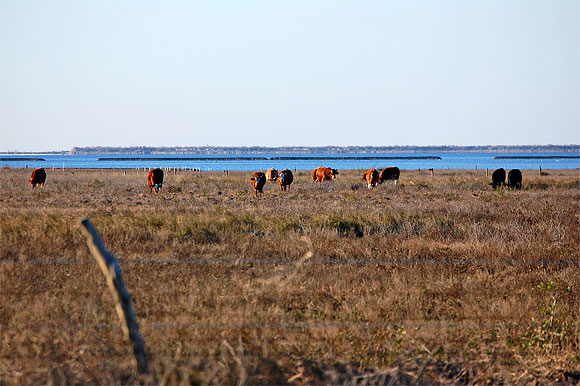
Beach cattle.
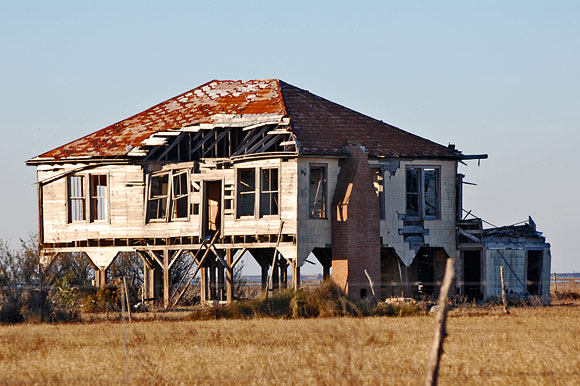
An old beach farmhouse.
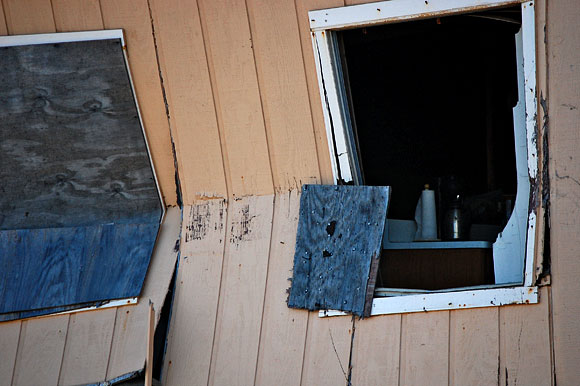
Dented home.
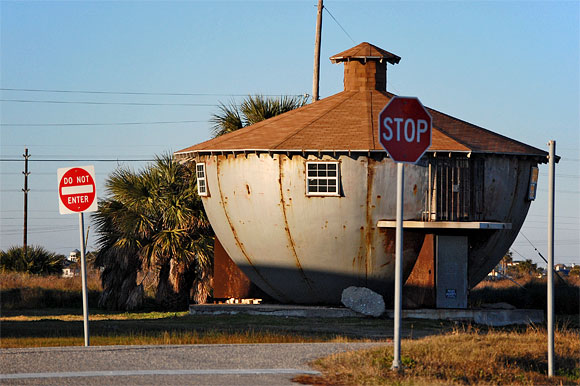
A metal teapot building.
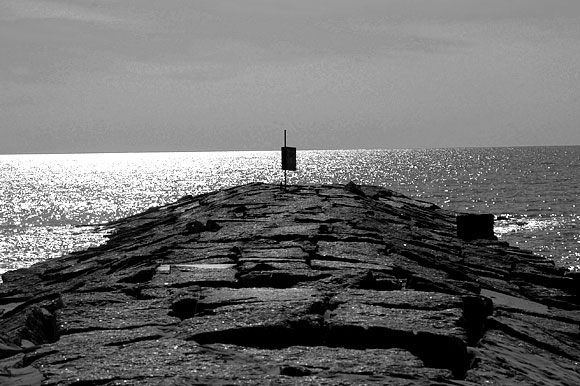
Jetty in black and white.
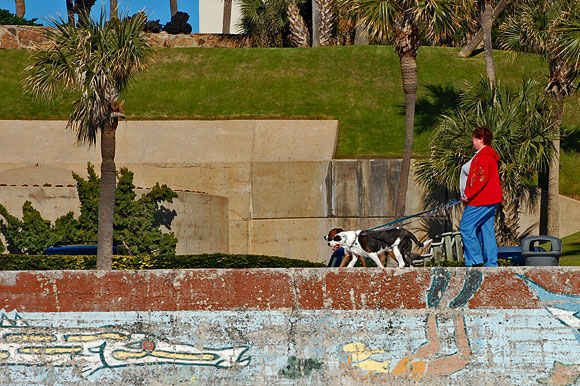
Woman in patriotic colors walks two dogs along the sea wall.
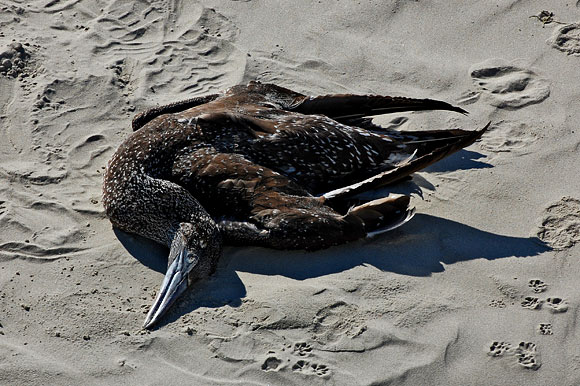
Dead bird in the sand.
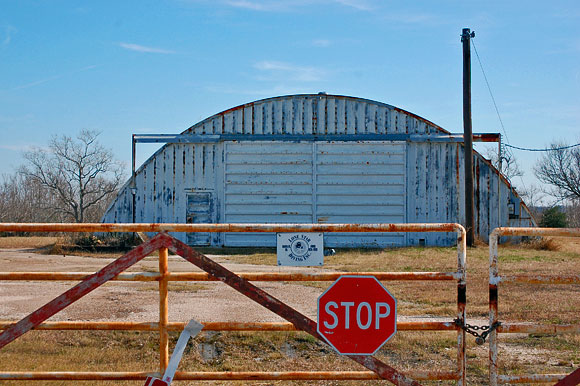
Stop! Quonset hut time.
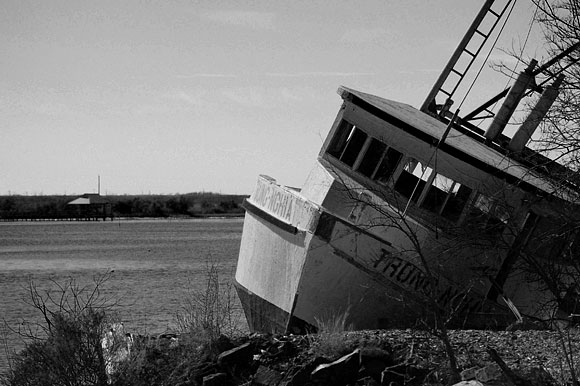
A beached fishing boat.
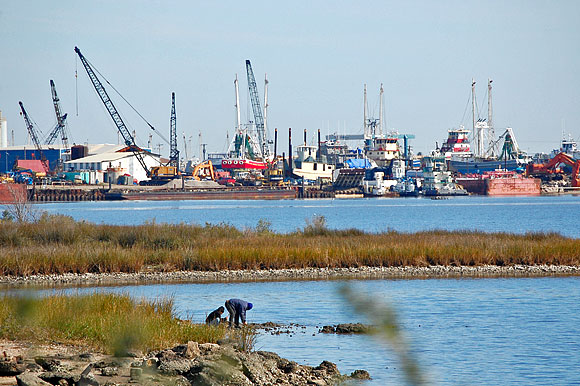
Cranes in the distance.
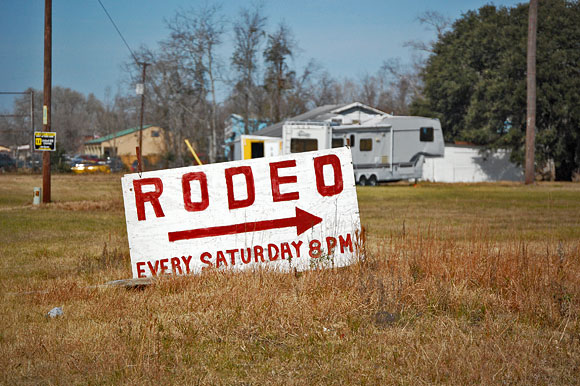
Rodeo to the right.
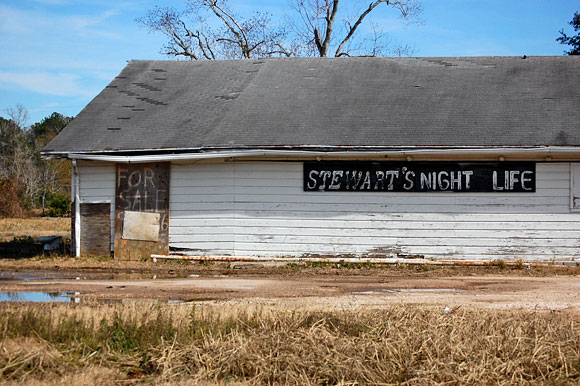
Stewart’s Night Life?
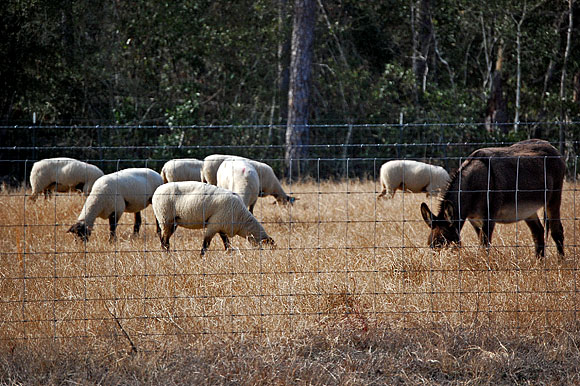
Sheep and a donkey.
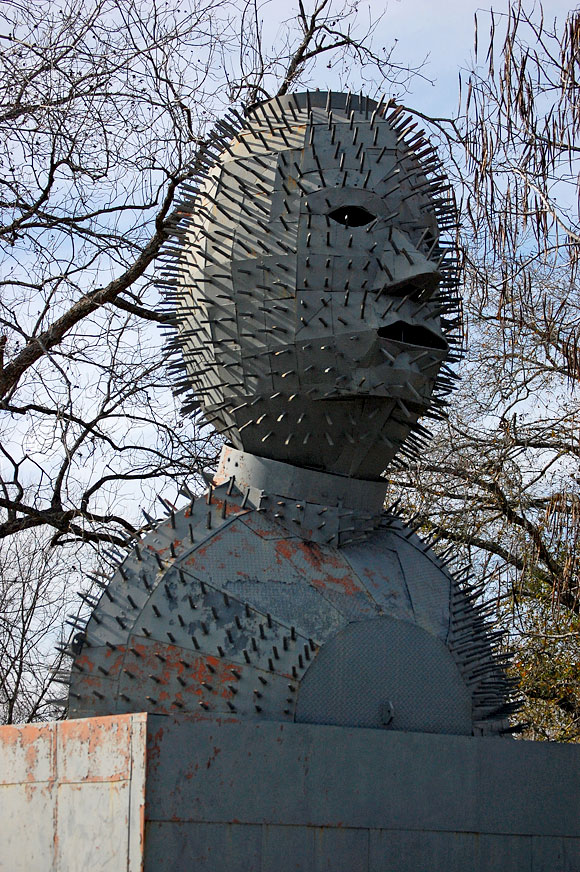
A small town’s public sculpture that’s a little Hellraiser.
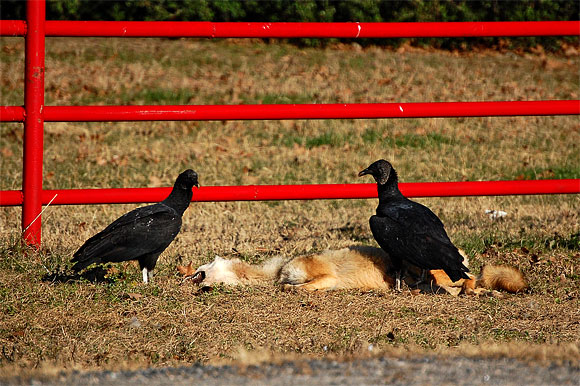
Two of a team of six American black vultures picking at the corpse of a red fox.
On Monday around lunch, we started driving back to Dallas. Rather than take the interstate the whole way, we went north along smaller country highways. From waterways, bays, refineries, and bridges, the scenery changed to woods, farms, and lakes. We didn’t dally much, as I wanted to be home by darkness.
Because when the night falls, the loneliness calls.

